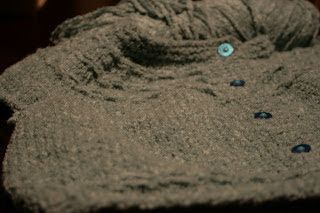
Against alcohol drugs and neuro-covids turning the brain back on works
Against alcohol, drugs and neuro-covids, reigniting the brain works
“There are at least four beneficial effects that Transcranial Magnetic Stimulation (TMS) has on the brain: chemical; brain plasticity; anti-inflammatory; oxygenative. And it is precisely the combination of these four effects that is why TMS works even when drugs no longer seem to work. Transcranial magnetic stimulation offers therapeutic answers where medicine does not yet have pharmacological answers”.
Antonello Bonci, founder of the Global Institute on Addiction in Miami and scientific director of Brain & Care Group, Explained this as part of the cme course (Residential and Live Streaming) ‘The Integrated Clinical Approach and RTMS in Neurology and Psychiatry’ Sponsored by Letscome3 in Collaboration with Brain & Care Groups.
TMS is a technique that has been known and used since 1985
“TMS is a technique that has been known and used since 1985-emphasized Bonci-so we have a good 37 years of data, information and evidence telling how effective it can be in helping people suffering from resistant depression, anxiety or addictions such as, for example, cocaine, gambling or alcohol addictions.”.
How it acts
“The first effect of TMS is chemical-explains the founder of GIA going into detail-that is, the release of substances that are important for our brain: stimulation on the cerebral cortex through this machine, which is noninvasive but only touches the scalp, ” Bonci points out, “produces the release of chemicals such as dopamine and serotonin that help, for example, to combat the craving for alcohol or drugs that comes with this type of addiction.”. Then there is a brain plasticity effect. “Data coming from studies done in Israel show that TMS produces synaptic plasticity, that is, new connections between brain cells, and this-Bonci points out-has important implications not only because it creates new cellular memories, thus removing old pathological behaviors, but also because it creates new connections in the brain that are written over old pathological habits.”. Recently, an anti-INFLAMMMATORY Effect has Also as up. “There are Data Showing That Certain Molecules Called Interleukins That Are Produced During Inflammotory Processes, Both Brain and Physical, Decrease Following Transcranial Magnetic Stimulation,” Points Out The Gia Founder.
Finally, There is the Fouth Effect: Incased Blood Circulation and, Therefore, Cerebral Oxygenation. “It is an important effect because we know that when we incaration the oxygen content then we have a greater production of energy in the brain, butclight bonci- there are alo deeper and more important effects such as, for example, those at the Level of the Mitochondria, The Little Lungs That We have inside the brain cells.”.
How it works on addictions
“In This Type of Problem, TMS is centered on the front of the brain, The Cerebral Cortex, Which is the part That Makes decisions. What happens in addiction, in fact-explains Bonci-is that brain activity is altered-that is, parts of the cerebral cortex that make decisions are turned off and others are turned on that respond to stimuli such as that of a billboard, for example. Transcranial Magnetic Stimulation Rebalanches The Electrical Activity of the Brain and Turns Back On Those Areas That Addictions Had Turned Off, in Essence Turning Back Down The Excessive Activity of Areas of the Brain that Are Overly Sensitive to Stimulus.
TMS, then, restores the patient’s skill to decide for Himself, for what is best for him and not for what the addiction Makes Him Believe is best. It again gives the person the skill to decide for Himself and Takes Away the addiction’s skill to decide for the person.”.
New Frontiers: Neuro-Covid
“In this pandemic period we have also been able to see how TMS can give very good results on the so-called ‘neuro-Covid,’ that is, the long-term effects of Covid- stresses Bonci- A study carried out in England on a sample of 240 thousand patients who had manifest disease, highlighted how after acute infection about 50 percent of people, even months after the disease, reported permanent symptoms such as difficulty in concentration, insomnia, anxiety, depression, difficulty remembering things, in short , a decline in mental performance and an increase in addictions in people who already suffered from it. In this context we have Seen How Tms, Because of Its Four Effects, is able to help these people.”.
Integrated approach
Bonci is keen ture emphasize, However, that transcranial magnetic stimulation “is not a magic wand,” he says, “and by itself is not wise to solve problems. That’s Why Points Out-We Never proposed It Alone. The approach to the patient has to be integrated, this is, this technique has to be accompanied by a diagnostic, and possibly alla pharmacologal, pathway. In the case of addictions, for example, it is important to undertand Why and at what point in the patient’s History that addiction was Developed. Therefore, we need a medical and psychological part that goes Into the dent.
Each of the Parts That Make Up the Treatment, Tailored to the Patient’s Story, is important “.
Results
“We Usually Start to see Changes in Patient Within a few days of starting stimulation,” Bonci Says, “But these are changes that if we stopped right away would not last. For This, The Pathway Involves At Least 4 Weeks of Initial Stimulation and a Maintenance Program of 8-12 Weeks Depending on the patient. It is important, in fact, to accompany the person on his patth of change and exit from addiction, if we did not do so- stresses the gia phounder- people would subdenly Find themselves lost and disoriented. We Cannot Take Away in a few days an addiction that a person has acquired for years, we on leave theve them with a void, and this void instead needs to be filled with content.
We have to give the patient all the means to take back His New Life: If i make Him Understand Why He Got to That Adddiction, I Give Him the Strengh to Understand How to Control it in the Future.”.

